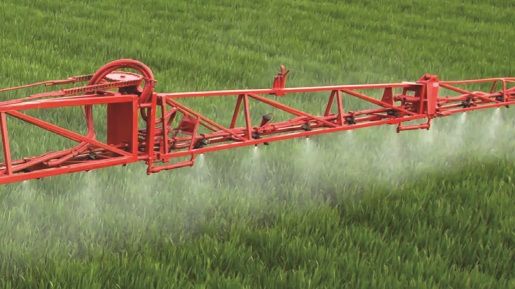
Foxtail barley is a growing concern for prairie growers. Once a weed of virtually no concern, the increase of minimum to no-till operations has meant this perennial, shallow-rooted weed, once easily broken up during tillage, has become a management issue for growers. New Olympus herbicide is one part of a system approach that helps growers manage this and other tough weeds in wheat.
“What makes Olympus unique is that it is designed to be used as part of a system,” says Jon Weinmaster, customer marketing manager for cereals with Bayer. “With minimal new modes of action on the horizon for herbicides, we’re having to be innovative with the products we do have. The Olympus system takes effective chemistries and uses them in a new way to meet the weed issues affecting wheat crops today.”
The Olympus system includes an application of Olympus plus Roundup herbicide applied at the pre-emergent or pre-plant stage. This is followed up with an in-crop application of a Group 2 graminicide, like Varro or Velocity m3, to reduce competition from flushing foxtail barley, downy brome, Japanese brome and volunteer canola, plus enhance wild oat control.
The advantage of using the Olympus system is that it provides a more lethal dose of Group 2 herbicide chemistry, boosting grass weed control and reducing the weed seed bank for future years. “In terms of resistance management, growers can consider this a Group 2 herbicide season when determining their chemistry rotation,” says Weinmaster.
One of the challenges of Group 2 chemistries can be follow-crop restrictions, but the Olympus system, when used with an application of Varro or Velocity m3, has rotational freedom for pulses, canola and all other major crops the following season, making it a flexible option for wheat growers.
TAKING DOWN FOXTAIL BARLEY
In a 2017 AgData survey conducted for Bayer, researchers asked 1,100 wheat growers to list their most problematic weed concerns. More than half flagged foxtail barley as one of their top weed management issues. Not surprising since no single incrop selective herbicide has been able to address the weed. It has grown in incidence and severity, and is becoming increasingly difficult to control.
“This product was developed specifically to target growers’ concerns with foxtail barley,” says Weinmaster. “Propoxycarbazone-sodium, the molecule used in Olympus, has been used successfully in the U.S. for many years. When growers shared with us that they needed a solution to this problem, we were able to bring it to Canada and adapt the tank-mix for Canadian wheat growers.”
Weinmaster says that in the past, residual products haven’t been as popular in Western Canada. This is changing as growers are seeing that combining products with a little bit of residual control can give them that extra edge needed to manage tough-to-control weeds.
Olympus received registration last year, however Bayer used last season to demonstrate the product to growers and to get feedback before launching it for the 2019 season. This was done through 239, 80-acre product demonstration trials, for a total of about 19,000 wheat acres treated with the Olympus system.
While corn and soybean growers are more familiar with a two-pass weed control option, Bayer chose to show wheat growers how a system approach could also benefit them before bringing to market.
According to post-trial survey results, 93 per cent of participants said they would use the system again, citing prolonged activity on weeds, better control of foxtail barley, enhanced wild oat control and follow-up crop freedom as the top benefits.